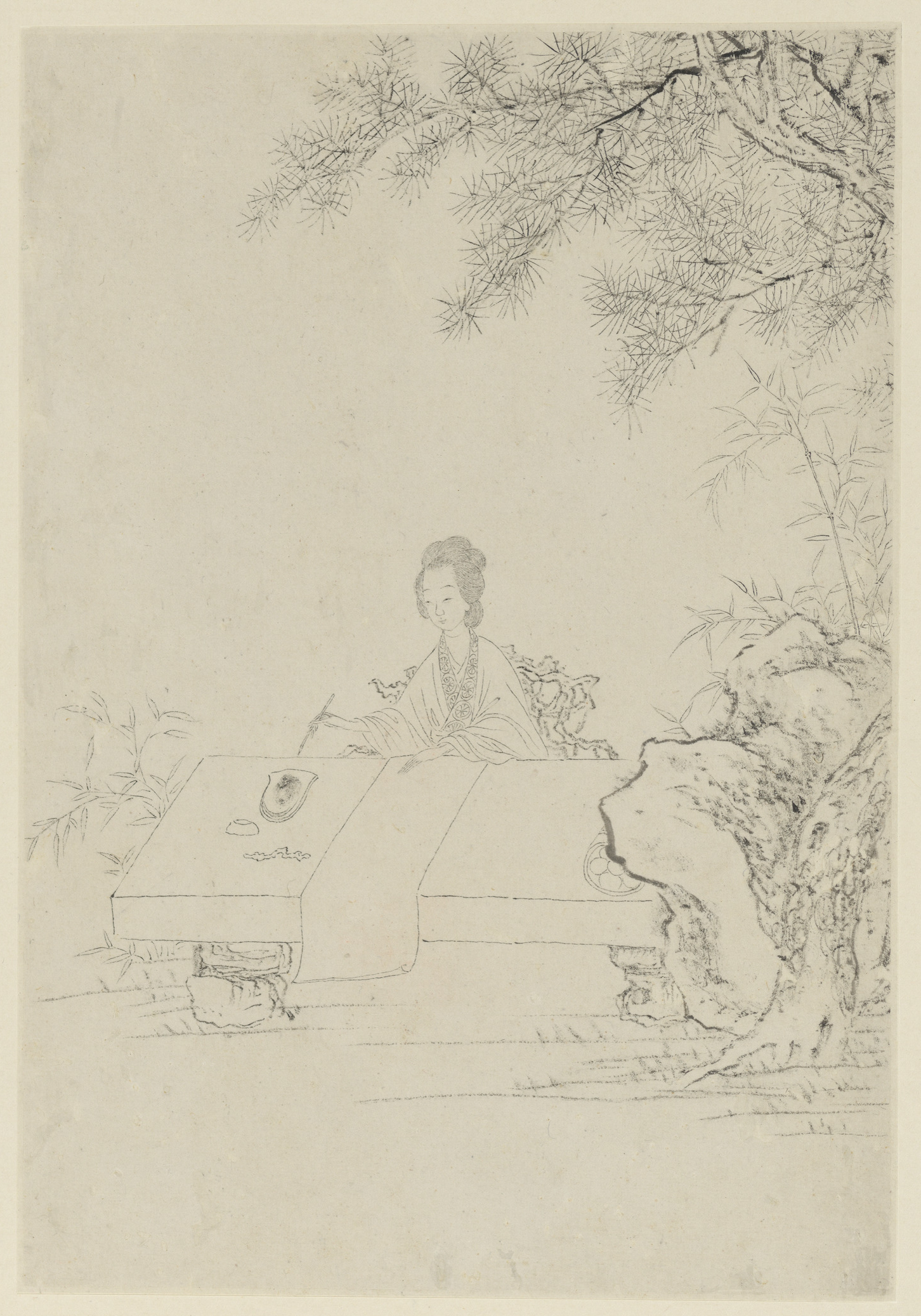Wei Shuo on:
[Wikipedia]
[Google]
[Amazon]

 Wei Shuo (, 272–349),
Wei Shuo (, 272–349),
"Wei Shuo"
''

courtesy name
A courtesy name (), also known as a style name, is a name bestowed upon one at adulthood in addition to one's given name. This practice is a tradition in the East Asian cultural sphere, including China, Japan, Korea, and Vietnam.Ulrich Theobald ...
Mouyi (茂猗), sobriquet
A sobriquet ( ), or soubriquet, is a nickname, sometimes assumed, but often given by another, that is descriptive. A sobriquet is distinct from a pseudonym, as it is typically a familiar name used in place of a real name, without the need of expla ...
He'nan (和南), commonly addressed just as Lady Wei (衛夫人), was a Chinese
Chinese can refer to:
* Something related to China
* Chinese people, people of Chinese nationality, citizenship, and/or ethnicity
**''Zhonghua minzu'', the supra-ethnic concept of the Chinese nation
** List of ethnic groups in China, people of va ...
calligrapher
Calligraphy (from el, link=y, καλλιγραφία) is a visual art related to writing. It is the design and execution of lettering with a pen, ink brush, or other writing instrument. Contemporary calligraphic practice can be defined as "t ...
of Eastern Jin
Eastern may refer to:
Transportation
*China Eastern Airlines, a current Chinese airline based in Shanghai
* Eastern Air, former name of Zambia Skyways
*Eastern Air Lines, a defunct American airline that operated from 1926 to 1991
*Eastern Air L ...
, who established consequential rules about the regular script
Regular script (; Hepburn: ''kaisho''), also called (), (''zhēnshū''), (''kǎitǐ'') and (''zhèngshū''), is the newest of the Chinese script styles (popularized from the Cao Wei dynasty c. 200 AD and maturing stylistically around the ...
. Her famous disciple was Wang Xizhi
Wang Xizhi (; ; 303 AD361 AD) was a Chinese calligrapher, politician, general and writer during the Jin Dynasty (266–420), Jin dynasty. He was best known for his mastery of Chinese calligraphy. Wang is sometimes regarded as the greatest Chinese ...
.
Biography
Born in modern Xia, Shanxi, Wei was the daughter of Wei Zhan (衛展) or the daughter or younger sister of Wei Heng (衛恆). Wei was married to Li Ju (李矩, not to be confused with the Jin general of the same name, Li Ju), the Governor of Ding Prefecture. Wei and Li had Li Chong (李充), also a calligrapher and a Palace Secretarial Attendant (中書侍郎). She was taught the style thatZhong Yao
Zhong Yao (151 – April or May 230), also referred to as Zhong You, courtesy name Yuanchang, was a Chinese calligrapher and politician who lived during the late Eastern Han dynasty and Three Kingdoms period of China. He served in the state of ...
taught, however, Wei's style is narrower than Zhong's wider style. Wei's ''The Picture of Ink Brush'' (筆陣圖) describes the Seven Powers (七勢) that later became the famous Eight Principles of Yong
The Eight Principles of ''Yong'' (; ja, 永字八法/えいじはっぽう, ''eiji happō''; ko, 영자팔법/永字八法, ''Yeongjapalbeop''; vi, Vĩnh tự bát pháp) explain how to write eight common Stroke (Chinese character), strokes i ...
.
Works
Wei's other works include: * ''Famous Concubine Inscription'' (名姬帖, ''Ming Ji Tie'') * ''The Inscription of Weishi He'nan'' (衛氏和南帖, ''Weishi He'nan Tie'')References
* Wang, Yuchi"Wei Shuo"
''
Encyclopedia of China
The ''Encyclopedia of China'' () is the first large-entry modern encyclopedia in the Chinese language. The compilation began in 1978. Published by the Encyclopedia of China Publishing House, the encyclopedia was issued one volume at a time, begin ...
'' (Arts Edition), 1st ed.
{{DEFAULTSORT:Wei, Shuo
272 births
349 deaths
4th-century Chinese calligraphers
Jin dynasty (266–420) calligraphers
Women calligraphers
4th-century Chinese women
4th-century Chinese people
3rd-century Chinese women
3rd-century Chinese people